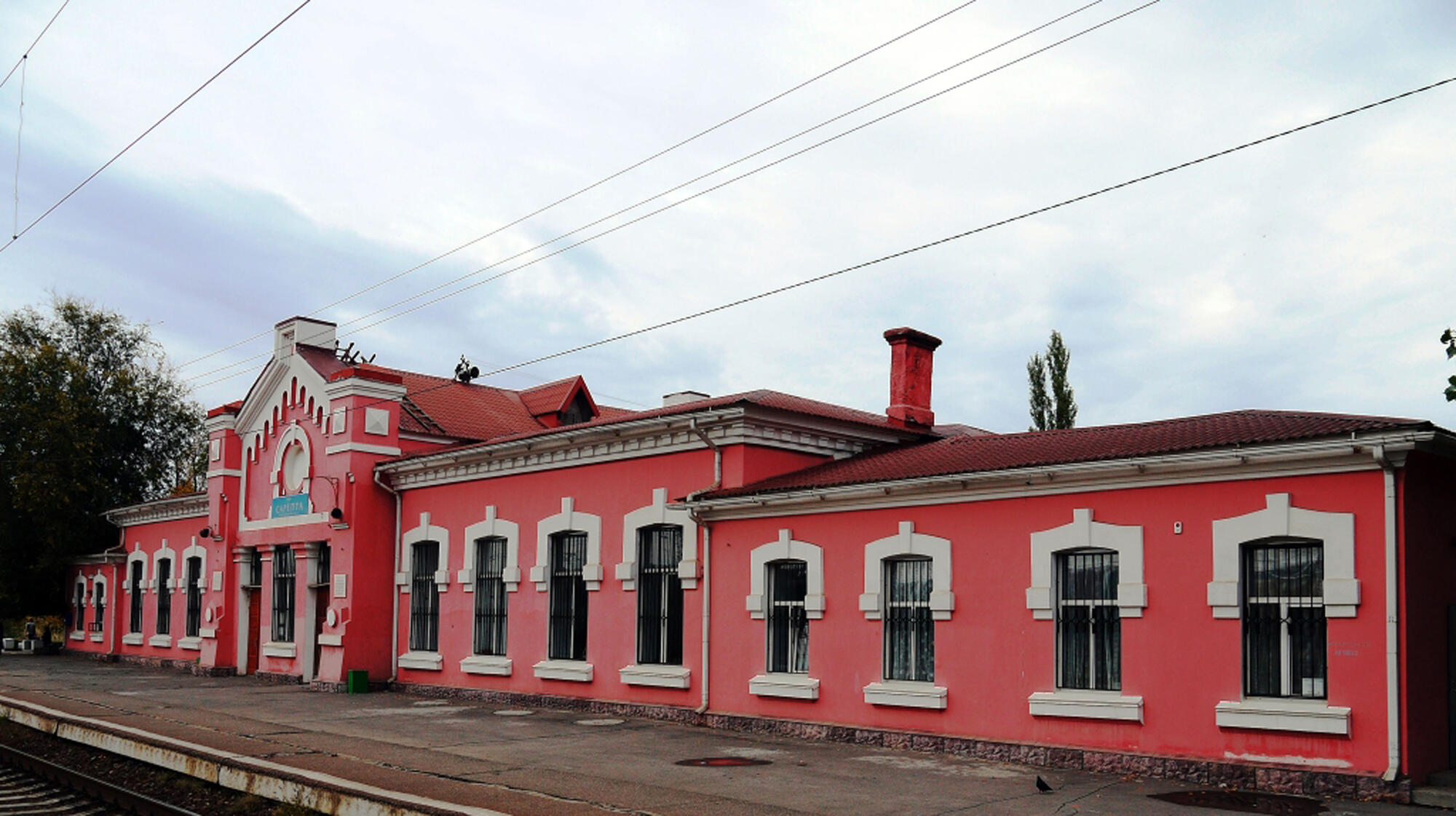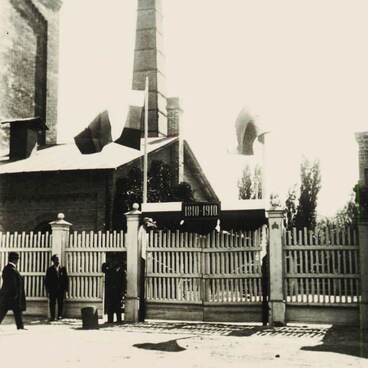The station got its name from the name of the German colony of SarEpta, located a few kilometers from it. The construction of the Tsaritsyn (modern Volgograd) - Tikhoretskaya (Krasnodar Territory) line of the Vladikavkaz railway took place in the 1890.
The construction of the station began in 1895. The line connected the Volga region with the Kuban and the North Caucasus. In 1896, freight traffic began on a new line, and on May 6, 1899, the first mail-passenger train to Tikhoretskaya passed through Sarepta.
Sarepta railway station as a part the transport hub of Tsaritsyn, quickly became an important transshipment point for goods from the railway to the Volga and back. In 1901, a river port, one of the largest in the Volga region, was built in the Sarepta backwater, which is a branch of the Volga. In the future, he was of great importance for the selection of a site for the construction of a shipyard.
Thanks to the river port the Sarepta railway station has become one of the largest in terms of cargo turnover on the Tikhoretskaya line. Local goods and products were sent from Sarepta by rail and along the Volga: mustard oil and powder, wheat, beer, bakery and confectionery products, crayfish, salted, smoked, dried and fresh fish. Also, agricultural implements, tools, iron and copper products, dressed leather, copper and ceramic dishes, bricks were exported from the river port.
Timber, iron, steel, coal, bricks, iron pipes, wheat and rye flour, cereals, grain, as well as oil, manganese ore, bauxite and salt were delivered to the port and station received.
Sarepta railway station has also become a major manufacturing center. Usually the role of the base for the maintenance and repair of the rolling stock was assigned to the terminal station. However, in this case, the locomotive depot and workshops were dispersed between two stations - Tsaritsyn and Sarepta. If the workshops at both stations were built in the same way, then the size of the depot was different. The building in Sarepta was designed for eight locomotives, and only four - in Tsaritsyn.
In addition, the station was an important social center. Hundreds of residents of neighboring villages and visitors found work here, a well-equipped village quickly grew around it. The Sarepta transport hub had its own school, water pumping station, power station and 18 steam locomotives. A suburban train from Tsaritsyn to Sarepta station four times a day.
The construction of the station began in 1895. The line connected the Volga region with the Kuban and the North Caucasus. In 1896, freight traffic began on a new line, and on May 6, 1899, the first mail-passenger train to Tikhoretskaya passed through Sarepta.
Sarepta railway station as a part the transport hub of Tsaritsyn, quickly became an important transshipment point for goods from the railway to the Volga and back. In 1901, a river port, one of the largest in the Volga region, was built in the Sarepta backwater, which is a branch of the Volga. In the future, he was of great importance for the selection of a site for the construction of a shipyard.
Thanks to the river port the Sarepta railway station has become one of the largest in terms of cargo turnover on the Tikhoretskaya line. Local goods and products were sent from Sarepta by rail and along the Volga: mustard oil and powder, wheat, beer, bakery and confectionery products, crayfish, salted, smoked, dried and fresh fish. Also, agricultural implements, tools, iron and copper products, dressed leather, copper and ceramic dishes, bricks were exported from the river port.
Timber, iron, steel, coal, bricks, iron pipes, wheat and rye flour, cereals, grain, as well as oil, manganese ore, bauxite and salt were delivered to the port and station received.
Sarepta railway station has also become a major manufacturing center. Usually the role of the base for the maintenance and repair of the rolling stock was assigned to the terminal station. However, in this case, the locomotive depot and workshops were dispersed between two stations - Tsaritsyn and Sarepta. If the workshops at both stations were built in the same way, then the size of the depot was different. The building in Sarepta was designed for eight locomotives, and only four - in Tsaritsyn.
In addition, the station was an important social center. Hundreds of residents of neighboring villages and visitors found work here, a well-equipped village quickly grew around it. The Sarepta transport hub had its own school, water pumping station, power station and 18 steam locomotives. A suburban train from Tsaritsyn to Sarepta station four times a day.




